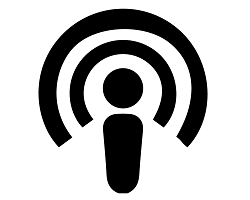Four Questions to Ask Yourself Before Shopping for Podcasting Equipment
 Neil Garrett, VP Marketing, uStudio
Neil Garrett, VP Marketing, uStudio
So you’ve decided to launch a corporate podcast. That’s a great idea! Private business podcasts offer a convenient, cost-effective, and secure way to connect and share information with employees, particularly those working remotely or traveling for work.
The decision to implement a private podcast is a critical first step to improving your business communication, but there are a number of other important decisions you have to make before the show becomes a reality. In this article, we’ll focus on one unavoidable decision: what type of equipment should you buy?
The answer, perhaps unsatisfyingly, is that it depends. However, here are the questions you should be asking yourself as you begin the search for podcasting gear.
What is your budget?
The cost of podcasting equipment ranges widely. Microphones alone range from $50 to $8,000. It is entirely possible to do a podcast on a shoestring budget but you may not be able to achieve the sound quality that is possible with pricier gear.
Whatever you do, don’t start buying gear before you’ve figured out what your overall equipment budget is and what tools you will need. You don’t want to end up buying a fancy microphone just to realize that you don’t have money left over for other important equipment: headphones, audio mixers, audio interfaces, editing software etc.
Coming up with an overall budget will enable you to make a more informed decision. For instance, instead of deciding what headphones you want, decide what percentage of your budget you’re willing to spend on that particular tool.
Where will you be recording?
You can record almost anywhere if you have the right equipment. The more background noise that is present, the more important it may be to invest in higher-quality technology.
For instance, if you’re creating a podcast that will involve interviewing people in different settings, you’ll want to have portable equipment that you can depend on to deliver quality audio no matter where you are. However, if every episode is going to be recorded with internal employees in a quiet room, your focus may shift from blocking outside noise to reducing room reverb with sound treatments, such as a vocal booth or acoustic panels.
How many people will be talking on the show?
Will your show have guests? If so, will you be talking to them in-studio, at another location or will they be speaking to you remotely (phone, Skype etc)? One thing to consider: if you have a high-end microphone, you won’t have to worry as much about guests not speaking loudly enough or not sitting close enough to the mic. Similarly, if you’re regularly going to have multiple people on the show, you should consider an audio mixer.
Will your podcast involve video?
Gestures, body language, and visual text can be helpful in getting your message across to your employees. The prospect of video podcasting opens up a whole other round of considerations. How professional of a video are you trying to create? Will you require somebody to hold a camera or will a stationary tripod or webcam do the trick?
If you don’t know the answers to these questions yet, you probably need to think a little more about what you want your podcast to look, sound and feel like. There are many, many different ways to do a good show from a variety of budgetary limitations, but they all require some level of planning. To be honest, many successful podcasts are recorded on a mobile device - if you can talk, then you can start podcasting.